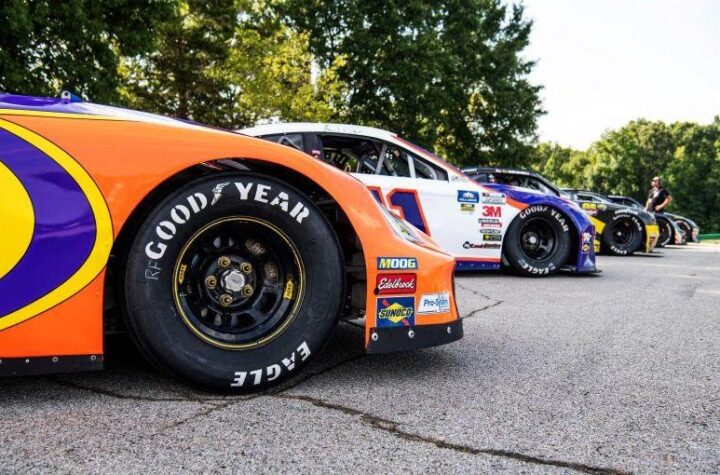
The American Iron and Steel Institute (AISI) announced that it will participate in the fifth steel industry global research initiative to mitigate automotive greenhouse gas (GHG) emissions. The project, Future Steel Vehicle, will develop steel auto body concepts that address alternative powertrains, such as advanced hybrid, electric and fuel cell systems. The goal of this research is to demonstrate safe, structurally efficient steel bodies for future vehicles that reduce GHG emissions over the entire vehicle life.
Future Steel Vehicle is a research initiative of the International Iron and Steel Institute’s automotive group, WorldAutoSteel, which has its headquarters in Brussels, Belgium. Representing AISI will be members of the Automotive Applications Committee (AAC), which includes most of the automotive steel producers in North America.
A multi-million dollar, multi-year program, Future Steel Vehicle will consist of three phases: Phase I: Engineering Study; Phase II: Concept Designs; and Phase III: Demonstration Hardware.
WorldAutoSteel has commissioned the world’s largest independent automotive engineering partner, EDAG Engineering + Design AG, which is headquartered in Fulda, Germany, to complete the first phase, engineering study. Development work will be based at EDAG’s Auburn Hills, Mich. Facility. Phase I will examine changes affected by new powertrain systems that may radically alter the structure of automobiles and will provide input for selection of Phase II design concepts. Phase I results are expected in 2008.
Future Steel Vehicle is the fifth in a series of auto steel research projects. The previous four, representing more than $60 million in industry investment by the world’s sheet steel producers, were undertaken over the last decade to demonstrate the application of new steel grades, design techniques and manufacturing technologies for light vehicle structures.
The UltraLight Steel Auto Body (ULSAB), UltraLight Steel Auto Closures (ULSAC) and UltraLight Steel Auto Suspensions (ULSAS) projects each demonstrated the successful use of advanced high-strength steel (AHSS) in high-volume steel applications that significantly reduced vehicle weight, while improving safety and performance and maintaining manufacturing affordability.
A fourth project, ULSAB-Advanced Vehicle Concepts (ULSAB-AVC), produced full vehicle concepts for a C-class and a mid-size vehicle. Achievements included significantly improved energy efficiency through lightweight AHSS applications.
“These previous research projects revolutionized the kinds of steels normally applied to auto bodies and demonstrated innovative steel vehicle designs,” said Edward Opbroek, WorldAutoSteel director. “The application of these research findings is seen globally in many vehicles on the road today. We expect the Future Steel Vehicle project to stimulate the same development in upcoming new vehicle architecture.”
According to Ron Krupitzer, vice president of AISI’s AAC, “Future Steel Vehicle comes at a critical time in the United States because our government is working on legislation for reduced auto tailpipe emissions. One of the challenges concerning automotive emissions regulation is to achieve the intended control without creating unintended consequences.
“We certainly agree that improving fuel economy and reducing emissions during the use phase of a vehicle is very important,” said Krupitzer. “However, the use phase represents only part of the total emissions associated with a vehicle throughout its life. A more comprehensive evaluation can be achieved if all phases of a vehicle’s life are considered — from materials production through the end-of-life vehicle disposal. This is life cycle analysis or life cycle assessment. LCA is often not sufficiently emphasized when examining GHG emissions.”
A recent study conducted by Dr. Roland Geyer at the University of California Santa Barbara confirmed that while vehicles with aluminum structures may have lower use phase emissions, there is no scientific evidence that their life cycle emissions are any better than vehicles with AHSS structures. Depending on the material chosen, increased GHG emissions during the production and end-of-life phases of a vehicle may offset reductions gained during a vehicle’s use phase.
Regulations that consider only the vehicle use phase can encourage use of low-density, GHG-intensive materials that provide somewhat lighter weight components. However, this may have the unintended result of increasing GHG emissions during the vehicle’s total life cycle.
ISO standards require life cycle assessment, which accounts for the combined GHG emissions from all phases of a product’s life. In such an LCA methodology, the production of alternative materials like aluminum, magnesium and plastics require more energy and contribute five to 20 times more GHG emissions per kilogram than steel.
AISI serves as the voice of the North American steel industry in the public policy arena and advances the case for steel in the marketplace as the preferred material of choice. AISI also plays a lead role in the development and application of new steels and steelmaking technology. AISI is comprised of 31 member companies, including integrated and electric furnace steelmakers, and 130 associate and affiliate members who are suppliers to or customers of the steel industry. AISI’s member companies represent more than 75 percent of both U.S. and North American steel capacity.
The Automotive Applications Committee (AAC) is a subcommittee of the Market Development Committee of AISI and focuses on advancing the use of steel in the highly competitive automotive market. With offices and staff located in Detroit, cooperation between the automobile and steel industries has been key to its success. This industry cooperation resulted in the formation of the Auto/Steel Partnership, a consortium of Chrysler LLC, Ford Motor Company and General Motors Corporation and the member companies of the AAC. For more news or information, view the American Iron and Steel Institute /Automotive Applications Committee’s website at www.autosteel.org.
American Iron and Steel Institute/Automotive Applications Committee:
— AK Steel Corporation
— ArcelorMittal
— ArcelorMittal Dofasco Inc.
— Nucor Corporation
— Severstal North America Inc.
— United States Steel Corporation











More Stories
What You Should Know Before Filing a Car Accident Claim
Injured in a Car Accident in St. Louis? Here’s What to Do Next
Historic Sportscar Racing (HSR) and Goodyear Announce Multi-Year Partnership